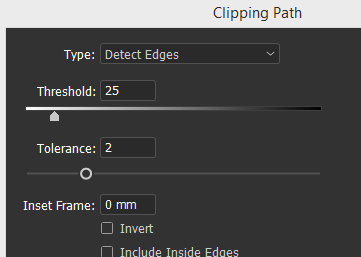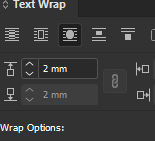So… How did you integrate technologies (software, hardware and online) in this project?
Category: Creative Critical Reflection 1
Question 3
So… How did your production skills develop throughout this project?
Question 2
So… How does your product engage with audiences and how would it be distributed as a real media text?
Question 1
So… How is it Going?
Reflecting on what I have achieved and produced so far, I can confidently say that I have made improvements in my overall media production skills, gaining a better idea of formatting and integration of different elements together on a page. I have also gained many transferable skills in the creation and production of this magazine, strengthening my communication, collaboration and organisation skills as I am required to direct models and arrange photo shoots. I feel that by practicing these skills have greatly developed them over the course of this project and will be able to continue using them in new tasks and environments.
Design Skills 2
As I continue to develop and create new pages to my magazine I continue to learn new techniques and skills in the software used, especially in InDesign as I am newer to this software.
A primary example of this would be using and editing text wraps and integrating these into my project; allowing words to automatically move and adjust themselves around images so as to not overlap and remain readable and clear. This contributes well to the genre of my magazine as it allows text to follow a more free and unconfined format, reflecting the non-conformist attitudes of the readers.
This continues to contribute to my overall skill and knowledge with this software, allowing me to create continuously better content and appeal to my audience more and more.
Design Skills 1
Despite already having previous experience and knowledge with Adobe software, especially Photoshop, I have still managed to learn some new skills in both InDesign and Photoshop as I work on the magazine.
In Photoshop;
I have learnt to change the workspace style, in this case to Photography, in order to much better facilitate the actions I will take with my photos, and more easily find any toold I may want to use (such as burn, dodge, sponge etc). This allows me to work much more efficiently and therfore spend more time concentrating on creating high quality images rather than trying to find the right tools.

In InDesign;
Since I have less general experience with using InDesign compared to Photoshop, I have learnt many more skills as I used the software, gaining experience as I work. As a lot of the skills I knew from Photoshop were generally transferable, I have learnt a lot more about text formatting and editing since this isn’t as much of a focus in Photoshop. Notably, working with how text wraps can be applied around images (and in turn, how these text wraps can be removed for overlay text), as well as how to change line spacing and apply drop capitals.
By learning and utilising these skills I can better create more unique, stand out genre-specific imagery as I’m more comfortable with the software, allowing me, for example, to make the custom paper-tab assets seen on my cover page, fitting the rough-around-the-edges style of the punk/alternative genre and clearly conveying this idea to the viewer.
So… I am Ready to Photograph my Star
It has finally come to a point at which I feel prepared and ready to begin work directly towards my magazine, using the knowledge I’ve gained throughout the course so far; covering ideas of encoding and decoding for preferred reading, AIDA (attention, interest, desire and action), as well as Blumbler and Katz’s uses and gratifications theory. From this, I can confidently step forward in this project with a clearer idea of what I aim to achieve and how I aim to achieve it.
In this shoot my main aim is to clearly and dynamically represent the authentic,proud, loud and rebellious nature and attitudes of the genre by using a range of skills in terms of camera and mise-en-scene.
Following the ideas of mise-en-scene presented in CLAMPS, I aim to show each element as follows:
- Costume – I intend to dress my model (Luke Halker) in dark, worn jeans, old, practical but comfortable shoes, a leather jacket and a stand-out, coloured striped shirt underneath.
- *Lighting – I will be using a standard, clear flash photography
- Acting – Whilst I will experiment with different expressions and poses as we shoot, I generally aim to create a sense of confidence and power through his body language and facial expression, facilitated by low angle shots and direct eye contact with the camera.
- Makeup/Hair – Aiming to keep this fairly simple and down-to-earth, I intend for Luke to have messy, natural hair with a small amount of eyeliner (a common trait within the genre)
- Props – As seen in many photo shoots of the genre, I aim to include some photos with Luke playing a guitar, to show the authenticity of music that is respected by the audience, I will also experiment with the use of caution tape to reflect the rebellious attitudes of the genre.
- *Setting – I will use a simple black/white backdrop of this shoot, with the focus remaining on the model themselves rather than their surroundings.
(*not an area within my control/choice for this shoot)
As well as mise-en-scene, as mentioned, I aim to utilize a range of camera techniques and perspectives. For example, using a low angle to show his power, as well as experimenting with shutter speed to capture movement and energy, and using aperture to focus on different elements of his character and personality through his acting. I will also attempt a range of shots using different framing, distances and angles.
So… I’m Ready to Make Some Media
As the first half-term of the course reaches and end and I complete the final tasks before the creation of my magazine it’s important that I reflect on what I have learnt and gained so far as a media producer. So far I can confidently say that I can identify and reflect on the use of;
- Mise en scene; (C.L.A.M.P.S.)
- Costume- the way characters / models are dressed
- Lighting- how lights and colours can be used to create an atmosphere
- Acting- the interactions and positioning of characters in a scene
- Makeup- (also including hair)
- Props- the inclusion of items and tools to be used / placed within a scene
- Setting- the surroundings and locational context of a scene
- Camera / Framing;
- (Extreme) closeup- shows detail and intimacy in a scene, creates an emotional connection for the audience
- Mid shot- most frequently used, often shows general action and interaction and allows multiple aspects of a character to be shown at once (emotion, stance, movement e.t.c.)
- (Extreme) long shot- often allows for the setting and overarching circumastances of a scene to be shown, can also display vunerability with the subject appearing small in a alrge mass of space
- High angle- looking down on a subject, often implying a sense of inferiority and vunerability
- Low angle- looking up at a subject, directly opposing high angle it often displays the subject as powerful and controlling
- Rule of thirds- the idea on the basis that an image is split into nine equal sections and that the attention of the image fits cleanly into each box to satisfy the eyes and avoid overwhelming or confusing amounts of information in one shot
- Magazine/Print Terms;
- Information- inclusion of clear, stand-out information in the form of plugs, pugs, slogans and captions
- Typography- fonts, formatting and general style of text to convey message and remain clear to read
- Colours- reflective of emotion / mood, should be complimentary to one another and remain consistent to the genre
- Audience- make sure to refer back to the target demographic and the typicalities within this in order to properly tailor your product and design to them
Other important considerations;
- A.I.D.A– Attention, Interest, Desire (or Decision), and Action. It is important to know and underastand you client and their mentality to be able to successfully appeal to what they’re looking for in a product that you create
- Blumler and Katz– Uses and Gratifications theory. This theory covers the idea of how an audience’s personal interests often correlate to and link with the media they choose to consume
So… How Can an Image Communicate Meaning?
Over the past couple of weeks I have learnt a significant amount about how to use photography and imagery to create a message/narrative. This can be done in many ways, using mise-en-scene and camera framing to create a large range of effects on the audience, all techniques which I can apply to my music magazine.
Firstly, mise-en-scene can convey meaning to an audience through six primary elements, costume, lighting, acting, makeup (and hair), props and setting. For example, a well dressed, brightly lit, tidy business man stood in a confident pose can convey a clear message of organisation, authority and power; whereas a dark, filthy scene of a child wearing rags cowering in a dark alley can convey the complete opposite, a sense of vunerability, hopelessness and despair; all through the simple use of changing what and how each component is placed in scene.
To further convey a message, however, you can take a step further to convey a narrative through the use of a camera. By controlling and altering the aperature, shutter speed and ISO as well as changing the angle, framing and distance of the camera from the model you can create a clear and distinct story. An example of this could be a centrally framed, close up of a small flower using a shallow focal length to blur the background. This creates a sense of value for the flower as it is the centre of the image, as well as singling out it’s features and isolating it from the surroundings by taking the image closer and more focused than a standard image.
Overall, I believe that after gaining this knowledge and skill I will better be able to take a clearer, more observant approach to the planning and excecution of my magazine photo shoots. Forming images that convey not only a clear denotation of what is happening in the shot but also implying connotations and showing what the photo can represent. This can create more emotionally-connected and attractive images that will appeal to the target demographic of my magazine.






